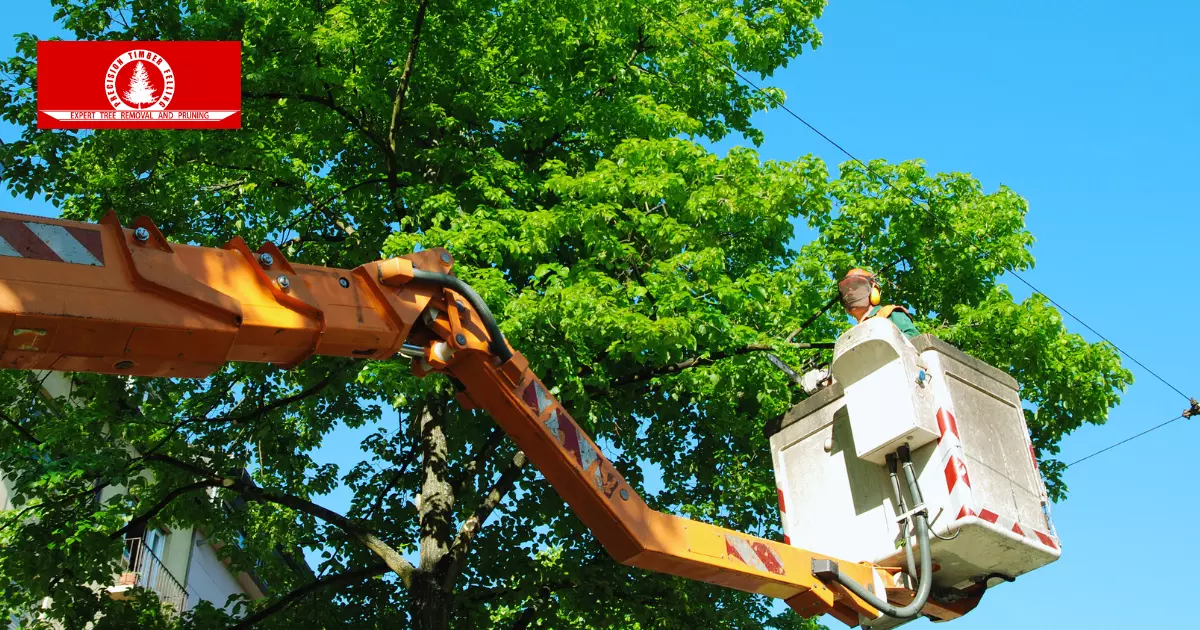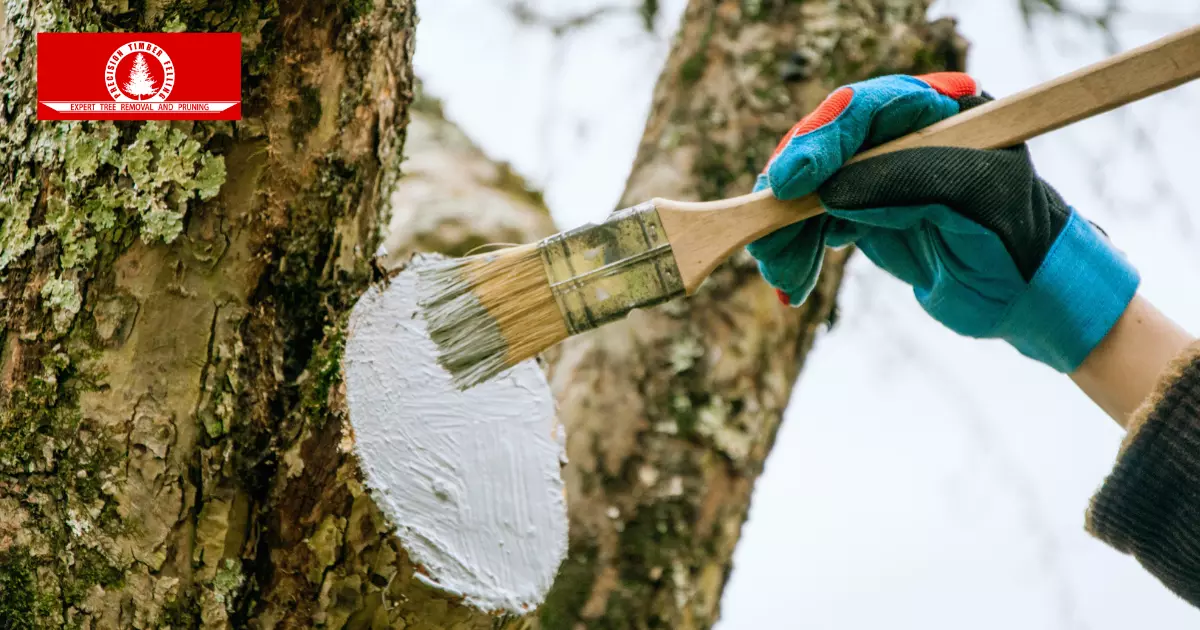Guide to Trimming Oak Trees to Prevent Oak Wilt
Trimming oak trees is an essential part of maintaining their health and beauty. Oak trees, with their tough and drought-tolerant nature, are a staple in many landscapes. Yet they face a silent threat– oak wilt. This fungal disease can kill even the healthiest of oaks.
The key to prevention lies in the timing and technique of pruning cuts. Improper trimming can lead to wounds in oak trees.
This article will provide homeowners with comprehensive insights on safely trimming oak trees. Continue reading to unlock the secrets of successful oak tree trimming.
What is An Oak Wilt?
Oak wilt is a formidable enemy of trees, especially the majestic oaks we cherish in Colorado. The fungus Ceratocystis fagacearum causes this disease. It ruthlessly attacks the tree’s vascular system. This is the tree’s lifeline through which water and nutrients flow.
Tiny sap-feeding beetles go to the fresh wounds from pruning or storm damage. They are the usual culprits in spreading this disease. Fungal spores spread from infected trees to healthy ones. Then, a deadly cycle continues.
Once these spores infiltrate a tree’s system, the oak’s natural defense mechanism kicks in. It tries to halt the spread by blocking its own vascular cells. But this often results in wilting branches that are a tell-tale sign of oak wilt. What’s more, the disease can stealthily move from an infected oak to a healthy tree through interconnected root systems.
Read also: Boost Tree Health: Spot and Address Sick Trees
How to Avoid Oak Wilt?
Learn three strategies to prevent oak wilt. Keep your oaks thriving with our essential, expert-guided tips:
Avoid Damaging Oaks
To safeguard against oak wilt, it’s crucial to avoid damaging oaks during their most vulnerable period, from April to July. This is when they are highly susceptible to infection.
Fungicide Injections
For added protection, homeowners might opt for the expertise of a professional arborist. These specialists can administer propiconazole-based fungicide injections to healthy red or bur oaks. While these injections don’t guard against infections transmitted through root grafts, they can maintain an oak’s health with biennial treatments.
Propiconazole Treatment
Additionally, white oaks showing initial signs of oak wilt can benefit from a propiconazole treatment to combat the disease.
Can Trimming Kill an Oak Tree?

It’s a question many tree owners in Colorado ponder: Can overzealous trimming harm, or worse, kill an oak tree? The answer lies in the age and health of the tree. Young oaks, under three years old, generally don’t need much pruning. A gentle trim to remove dead or broken branches is usually sufficient. However, you can get carried away and over-prune a young oak. That is when you’re risking its health, even its very survival.
For the more mature oaks, those over three years old, the trimming rules shift. They only require pruning every two to three years. It’s crucial to focus on branches that crowd the tree’s center or rub against each other. These can create wounds, making the tree vulnerable to diseases.
Remember, the goal of trimming is to support the tree’s health and growth. So you need to trim oak trees correctly.
When Is The Best Time to Trim an Oak Tree?
Timing is everything, especially when it comes to trimming oak trees. In Colorado, the golden rule is to prune between November 1 and March 15. Why this specific window? Well, it’s when your oak trees are in their dormant phase. This period of rest for the tree is your best bet for a successful trim. It allows for better visibility of the canopy and identifies dead, diseased, or crossing branches.
Read also: Healthy Trees, Beautiful Yard: The Importance of Tree Trimming
Pruning in late fall to early spring minimizes the risk of disease and infestations. These are more prevalent in warmer months. During these cooler months, oak trees are less susceptible to the threats that can accompany pruning.
How to Trim an Oak Tree?
- Begin by thoroughly inspecting your tree. Trim no more than 25% of its branches each season to maintain its health.
- Trim branches carefully and avoid leaving stubs. Do not cut into the branch collar. This precision is crucial for the tree’s proper healing.
- Remove branches that cross or touch each other. Address branches with sharp angles to promote healthier growth.
- Prune lower branches to simplify lawn mowing and maintain a clean under-tree area.
- Immediately cut away any diseased or damaged branches. Do this to prevent the spread of oak wilt infection and maintain the overall health of your oak tree.
Using the right pruning techniques and tools, such as pruning shears, is essential for property owners. Maintain the health of oak trees and the effectiveness of tree service.
Why Use a Three-Cut Method When Trimming an Oak Tree?
Trimming an oak tree requires ensuring the health and longevity of the tree. This is where the three-cut method comes into play. It is especially vital during the late winter months. Pruning of oak trees is ideal in this season for health and structure.
The first cut is on the underside of the branch a few inches from the branch collar. It prevents bark tearing if the branch falls unexpectedly.
The second cut is 2 to 4 inches out from the branch collar. It is necessary to remove the bulk of the limb and leave behind a small stub. This step is crucial to avoid damage to the branch collar. See it as a vital part of the tree’s natural healing process.
Finally, cut the remaining stub past the branch collar. Allow a clean finish that promotes quick and healthy healing. Professional arborists understand this pruning process intimately. Each cut contributes to the overall health of your oak trees.
What Are The Things to Do After Trimming an Oak Tree?
Post-trimming care is crucial for the health of oak trees. Proper aftercare will protect the tree from wilt.
Wound Paint
After pruning, immediately apply wound paint. Unlike other trees, oaks benefit from this step. Wound paint, preferably with an asphalt or latex base, forms a protective barrier. It safeguards the fresh cuts from sap-feeding insects that can transmit oak wilt.
Put the wound paint thinly and promptly. Make sure to cover wound sites, regardless of their size. This is a vital defense strategy against oak wilt.

Regular Watering
Beyond this, regular watering is key. It supports the development of new shoots, which is crucial after major pruning. Watering becomes even more important during droughts. Do this to prevent water stress in these resilient yet vulnerable trees. Additionally, continue your usual fertilizing regime to encourage new growth and support the overall health of your oaks.
What to Avoid When Trimming an Oak Tree?
Trimming an oak tree seems straightforward. But there are pitfalls to avoid for the health of your mighty oak.
Flush Cuts
Flush cuts are the most common mistakes. These occur when a branch is cut too close to its point of attachment. Doing so will damage the crucial branch collar. This collar is essential for healing the cut. If it’s disturbed, it leaves an open door for pests and bacteria.
Dreaded Stub Cut
Dreaded stub cut leaves a portion of the branch that’s too long to properly heal. Think of it this way: if you can hang a hat on the stub, it’s too long.
Lion Tailing
Lion tailing is where over-pruning the inner branches shifts too much weight to the ends. It leads to weak branches and rapid, unhealthy growth.
Dull tools
Dull tools make pruning harder and cause more damage to the tree. Trees are more challenging and riskier to trim. If you make a trimming error, the branches won’t regenerate.
Wrapping Up
Trimming oak trees is a delicate art that requires precision, understanding, and the right techniques. Doing so protects from the devastating effects of diseases like oak wilt. However, make sure to follow proper pruning guidelines. It is also essential to use the right equipment and understand the distribution of tree nutrition. All these improve the health and longevity of your oaks.
Remember, it’s always better to consult certified arborists. Their knowledge and experience will help when dealing with difficult portions. They make sure that every cut contributes to the tree’s health rather than damaging it.
At Precision Timber Felling, we help Colorado residents and business owners trim their oak trees. Our team of certified arborists is equipped with the essential tools and knowledge.
We also handle even the most challenging pruning tasks. Contact us today for expert guidance and services in maintaining the health and beauty of your oaks.

The post Guide to Trimming Oak Trees to Prevent Oak Wilt appeared first on Precision Timber Felling.
from Precision Timber Felling https://precisiontimberfelling.com/guide-to-trimming-oak-trees/?utm_source=rss&utm_medium=rss&utm_campaign=guide-to-trimming-oak-trees
via Precision Timber Felling
Comments
Post a Comment